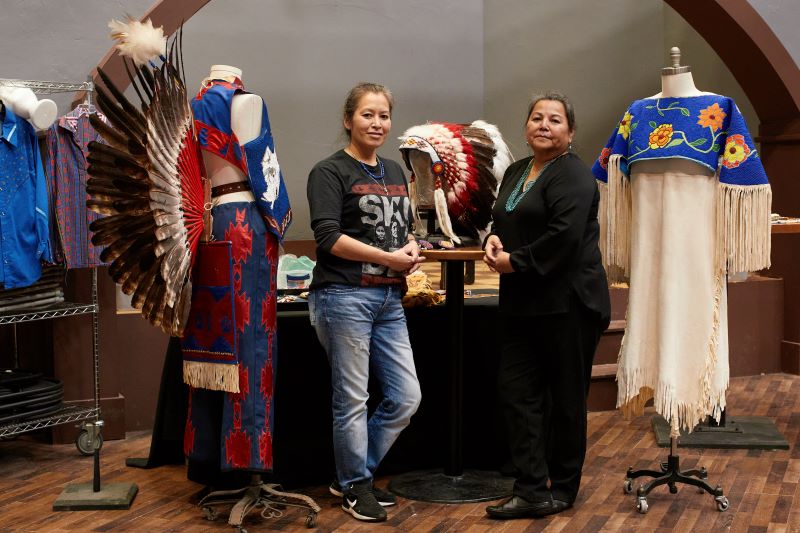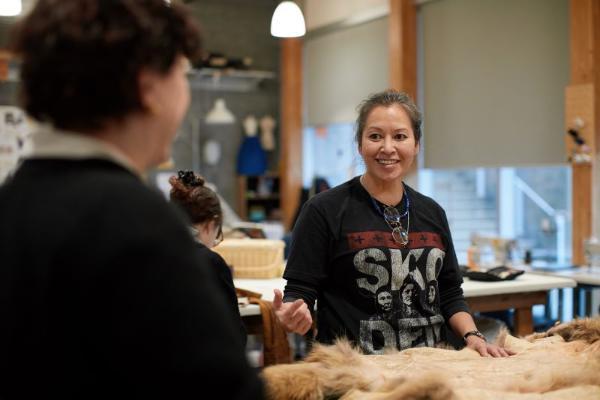When a costume isn't a costume
Costuming for Stage and Screen students learn cultural knowledge to work with Indigenous clothing with sensitivity and respect.

Students in CapU’s Costuming for Stage and Screen program gain hands-on training beyond the “costume”. With the proliferation of Indigenous storytelling through theatre, film and TV productions, CapU’s program now equips students with the cultural knowledge to describe and handle Indigenous clothing and regalia with sensitivity and respect.
“We do not talk about First Nations garments as costumes in and of themselves,” said Anthea Mallinson, instructor, Costuming for Stage and Screen at Capilano University. “When we use the term costuming, we mean garments that are being used in a production that requires costumes. As non-Indigenous faculty, we recognize that there is a base of work that we cannot enter without First Nations guidance and permission.”

Student Fiona Raavita gets hands-on learning from Indigenous costume designer Carmen Thompson
CapU Costuming students recently completed a four-day intensive course called First Nations Guided Exploration, taught by CAFTCAD award-winning Indigenous costume designer Carmen Thompson (Diitiidaht/Kyuquot/Coast Salish) in collaboration with Indigenous film producer Doreen Manuel (Secwepemc/Ktunaxa), director of CapU’s Bosa Centre for Film and Animation.
Manuel has shared her collection with Costuming students for a number of years, but this marks the first year an intensive course, taught from an Indigenous worldview, was integrated into CapU’s Costuming for Stage and Screen program.
“My goal was to create a safe space for the students to be able to ask questions regarding Indigenous clothing within costuming,” said Thompson. “Each student was able to handle the pieces we brought in, and were taught the importance of each piece and how it is used within our culture. A couple of students had the honour of repairing a wolf hide cape, they did so with the utmost respect and did a beautiful job in handling and restoring the wolf hide to working condition.”
Mallinson, who teaches and continues to work as a key textile artist on film productions, explains that it is important for students to get this cultural training now, as some graduates may be called upon to work as makers in the Indigenous media production space.
“I hope that each student feels more comfortable now to be able to ask questions, and if they ever get to work on a production that does have Indigenous features within the story line or script, that they will be able to safely work with the costume department and create with cultural respect,” said Thompson. “I hope that they can move forward in their career with the tools to be able to work with Indigenous costuming and feel comfortable to question the cultural authenticity within their projects.”

Student Zoe Musselman works with Doreen Manuel, director, Bosa Centre for Film and Animation at Capilano University
Submitted by: Communications
